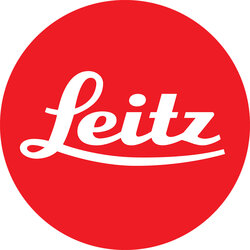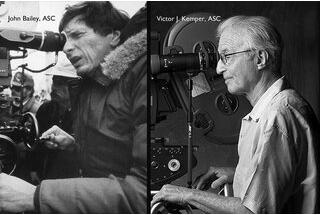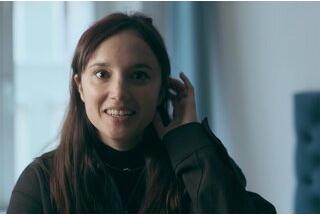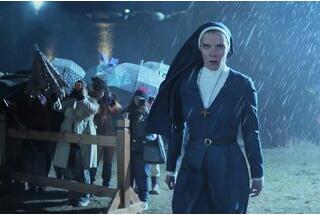Céline Bozon: Crossing Borders
By Ariane Damain Vergallo, for Ernst Leitz Wetzlar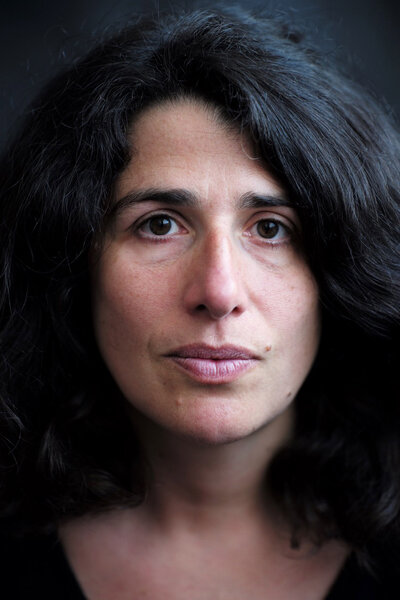
That certainly disconcerted 14-year-old Céline Bozon. Hadn’t her parents - student protesters in the late ’60s, but now both teachers - always told her the exact opposite: "Do whatever you want, whatever you are passionate about"?
Neither side, however, had imagined that within ten years, the profession of photo-printer the teenager was so eager to practice would be a thing of the past and that Céline Bozon would finally choose cinema, Paris, freedom and the Femis Film School.
This passion for silver halide photography came to her when she joined her high school photo club and soon became an obsession, leading her to spend every second of her spare time there, including breaks between classes. Her ardor was such that she convinced the headmaster to let her print all the school year group photos, in black and white.
To this day, she still wonders whether, to her schoolmates, that was not more a curse than a blessing, as the prints may have faded over time, thus forever depriving them of their high school memories.
Recently, returning to her first love, Céline Bozon treated herself to a silver film-based Leica R3, a delightful fusion of mechanics and lenses, a still-camera dream, pure and simple. No, she is definitely NOT giving up on silver film stock.
A few months ago, her brother, director Serge Bozon, asked her to design the lights for his next film, Madame Hyde. Starring Isabelle Huppert and Romain Duris, it is, of course, inspired by Robert Louis Stevenson’s famous novel, The Strange Case of Doctor Jekyll and Mr Hyde. To meet her brother’s (and the novel’s) challenge, Céline Bozon immediately chose to shoot in 35mm and to get her hands on an old stock of Fuji film.
Only 60,000 feet of Daylight "Vivid" 250 ISO were available. So, for the very end of the film, she chose another stock of Tungsten "Eterna" 250 ISO which turned out to be of a lower quality: too soft, with a limited range of colors and a sensitivity of 80 ISO.
Last summer, just before principal photography was scheduled to start, Céline Bozon was on vacation, yet impatiently waiting for the phone call that would finally let her know the Leica Summilux-C series was now available and could be used for Madame Hyde. "I was happy".
The stakes were high. Shooting with such an immense actress as Isabelle Huppert is a double-edged sword: it is definitely a pleasure, but it also requires extra-double attention from the cinematographer, as the actress is — to put it mildly — extra-cautious about her image.
"Nothing to say, really, against the 35mm stock in combination with the Summilux-Cs. The skins look absolutely wonderful. Smooth and soft, but with contrast. I loved the Summilux-Cs."
And so, come the fall of 2016, Madame Hyde’s principal photography brought Céline Bozon back to Lyon, a city of prime importance to her family’s history. During WW2, her Jewish grandparents ran a clothes store there. In 1945, they were anonymously reported to the Nazi occupant and forced to flee to Switzerland. Despite the fact that her grandmother was pregnant (with Céline’s uncle), they crossed the border on foot and managed to settle in Switzerland until the end of the war. Then they returned to France but never went back to Lyon — the memories were too painful. Instead, they decided to settle in Annecy... not far from the Swiss border.
On the other hand, Céline Bozon’s parents both studied in Lyon; they met and fell in love there, thus opening a new — and happy — chapter on the very premises that held such dark memories for her grandparents. Later, in a deliberate pro-Palestinian transgression, her parents would constantly - yet peacefully - clash with her grandparents about the Israeli-Palestinian conflict. Those endless family discussions triggered a specific curiosity in the young woman about the Middle East and the crazy complexity of that "Hundred Years War".
The idea that one can, overnight, leave everything behind deeply affected Céline Bozon, giving her both an enormous energy and a yen for embarking on a journey on the spur of the moment — because, she says, "the journey is as engrossing as the DP’s job."
Barely graduated from the Femis School and just 24 years old, she lit her first feature film, Jean-Paul Civeyrac’s Fantômes (2001). Merely two years later, director Tony Gatlif entrusted her with Exiles. Along with her first major public success, the film brought her recognition from the entire profession (Exils got the Best Director Award at the Cannes Film Festival.)
Her meeting with Tony Gatlif is that of two instinctive, impulsive individuals. Tony Gatlif is the "wily, resourceful, smart cookie": the son of a Kabyle and a Gypsy woman, at the age of 13, he fled from Algeria, "crossing the border" to avoid a preordained destiny — namely a forced marriage.
In France — call it a metamorphosis — he turned into that flamboyant director who, to everyone’s surprise, chose a young cinematographer for his most autobiographical film, Exils, and took her to his native country, Algeria, to revisit his past.
"The real twists of my life are all film-related. Some encounters just make you feel more alive."
That first trip to Algeria with Tony Gatlif was followed by many others, almost all to the Middle East or North Africa, except for Alain Gomis’s Félicité (2017) which allowed her to discover Congo. In 2006, she went to Israel to shoot Pork and Milk, a documentary directed by Valérie Mrejen. Israel and sudden violence. Two buses exploded during the shoot, causing over a hundred casualties.
The following year, she went to Lebanon and Jordan with Danielle Abird and, in the midst of production, the crew had to be evacuated as a matter of emergency. "I’m a bit irresponsible, I’ll just accept any movie."
Selected by the Directors’ Fortnight at the Cannes Film Festival, A Lost Man is a beautiful work made by two women filming two men. Magnificently. To wit, the long hand-held traveling shot in which actors Melvil Poupaud and Alexander Siddig, profile against profile (low angle), stand out, slightly back-lit, against a sunset background. That shot alone will attest to Céline Bozon’s uniqueness as a cinematographer with an exquisite sense of tempo.
In 2013, Céline Bozon returned to Algeria with Nassim Amaouche for Des Apaches, a key film in her career. And recently, she went back to Lebanon with Michel Kammoun to shoot Beirutholdem, which they just wrapped.
Consider this — 30 features, shot by Céline Bozon in less than 18 years — and wonder whether what, early on, might have been brushed aside as "sheer luck" was in fact an unwavering sense of commitment, a loyalty to her childhood’s passion, a pure talent that will know no restraint. It is unclear whether all her travels allowed her to openly take sides on the Israeli-Palestinian conflict which spearheaded many family debates over three generations.
One way or the other, the fourth generation - Ito and James, 9 and 4 ("Yes, I allowed myself the luxury of having two kids") - is far too young to have or voice an opinion and, hopefully, they may never have to.
(Translated from French by Henri Béhar)
 En
En
 Fr
Fr